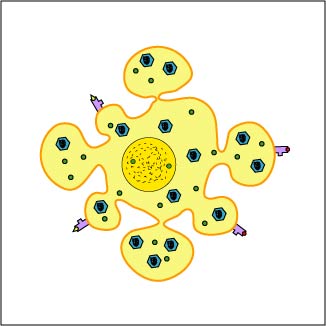
Binding of the CTL to the infected cell triggers the CTL to release pore-forming proteins called perforins, proteolytic enzymes called granzymes, and chemokines. Granzymes pass through the perforin pores and activate the enzymes that lead to apoptosis of the infected cell by means of destruction of its structural cytoskeleton proteins and by chromosomal degradation. As a result, the cell breaks into fragments that are subsequently removed by phagocytes. This prevents the release of any mature viruses that might occur if the infected cell was lysed.
Last updated: August, 2019
Please send comments and inquiries to Dr.
Gary Kaiser